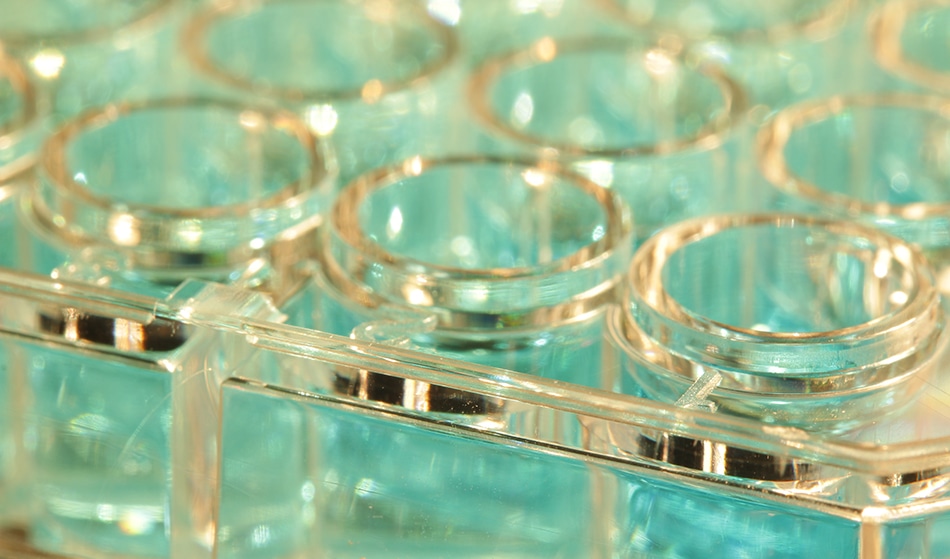 Photo credit: schlyx/shutterstock
Photo credit: schlyx/shutterstock
Raman spectroscopy, a method that uses scattered laser light to identify molecules, has become increasingly critical to identify and characterize specimens on the molecular-scale. However, the technique has a limited ability to identify molecules in diluted specimens due to low signal yield.
To address this issue, a team of scientists from the University of Hyderabad in India has enhanced the molecular detection of Raman spectroscopy at low concentrations by organizing silver nanoparticles on nanowires in specific arrangements. The development, outlined in a new study published by the Journal of Applied Physics, is a big step forward for surface-enhanced Raman spectroscopy (SERS), which uses electromagnetic fields to boost Raman scattering and responsiveness in conventional dyes by greater than one billion times.
In the new study, the team appointed vertically-arranged silicon nanowires with various densities of silver nanoparticles, making use of and enhancing the structure's form. By doing this, the team was able to strengthen the Raman signals for cytosine protein and ammonium perchlorate by 100,000 times.
“The beauty is that we can improve the density of these nanowires using simple chemistry,” study author Soma Venugopal Rao, a professor at Hyderabad, said in a news release. “If you have a large density of nanowires, you can put more silver nanoparticles into the substrate and can increase the sensitivity of the substrate.”
Past efforts have applied nanostructures to SERS devices with limited success. Three dimensional structures made with silicon nanowires has gotten attention for their exceptional performance, but silicon nanowires are costly to create.
In the new study, the team was capable of figuring out a less expensive approach to produce silicon nanowires. They used a process known as electroless etching to create a wide variety of nanowires, and then adorned the wires with silver nanoparticles that had variable and controlled densities, which boosted the nanowires’ surface area.
“Optimizing these vertically aligned structures took a lot of time in the beginning,” said co-author Nageswara Rao, who is a PhD researcher in condensed matter physics at Hyderabad. “We increased the surface area and to do this we needed to change the aspect ratio.”
After refining their system to the point that it could recognize a dye on the nanomolar scale, these new substrates the team built were able to boost Raman sensitivity by a factor of 10,000 to 100,000. The substrates found concentrations of cytosine, a nucleotide located in DNA, and ammonium perchlorate, a molecule that could potentially be used to detect explosives, in as dilute amounts as 50 and 10 micromolar, respectively.
The outcomes produced by the research have given the team cause to suspect that identifying compounds in concentrations on the nanomolar or picomolar scale might soon be possible, according to Nageswara Rao. The work has also opened up a number avenues for future study, from trying various nanoparticles like gold to making the nanowires sharper to assessing these devices across many kinds of molecules.
Raman spectroscopy is just the latest scientific area where nanoparticle have led to a thrilling discovery. The new study comes less than a month after researchers at the Friedrich Schiller University in Germany announced they had used nanoparticles to develop a way to deliver antibiotics more effectively than conventional means.
Specifically, the German team said their nanoparticle-based system could be used to better treat airway infections. The current means of treatment involves the inhalation of antibiotics. The drugs must make it through a circuitous path in the lungs before reaching their intended target. The researchers found that nanoparticles could more effectively transport antibiotics through the lungs’ narrow passageways, increasing the odds of a successful treatment.
Disclaimer: The views expressed here are those of the author expressed in their private capacity and do not necessarily represent the views of AZoM.com Limited T/A AZoNetwork the owner and operator of this website. This disclaimer forms part of the Terms and conditions of use of this website.